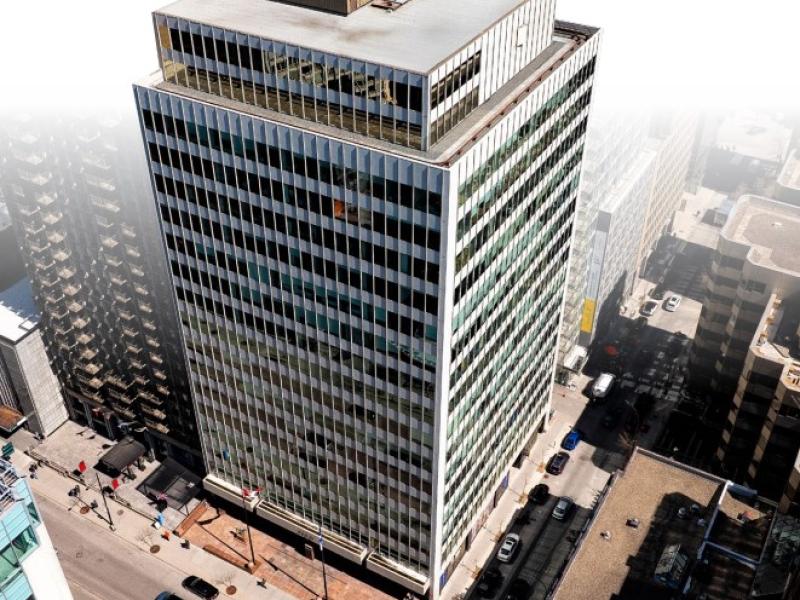Companies seeking ways to increase capital could literally be sitting on a viable solution, says Dave Anderson of Cushman and Wakefield (Waterloo Region).
The senior vice-president – who is also a broker – for the Kitchener-based real estate brokerage firm suggests that, for companies operating their business from buildings they own, there is no better time than now to engage in something called a sale-leaseback.
In simple terms corporations which own real estate can sell the property to an investor and then lease the building, or a portion of the building, at a favourable rate. By doing so they are able to separate their business operations from their assets.
This is a particularly attractive factor to some, considering very few company owners are well-versed in the nuances of modern commercial real estate. Few follow the changing trends in the industry.
“Right now is a pinnacle time to do a sale-leaseback because interest rates are extremely low and the climate is perfect in terms of the imbalance between buyers and sellers,” Anderson explains. “Right now there are many more buyers chasing product, whether it’s private individuals or money flowing in from the capital market also chasing product.”
Sales-leasebacks increasingly popular
This real estate strategy has become increasingly popular during the past decade. Many private equity firms, as well as individuals, are taking advantage of sale-leaseback transactions because it raises capital from an otherwise depreciating asset.
Anderson says the term of the lease can range anywhere from five to 15 years. Most commonly they are at 10 years. He points out a building generally has greater value if it is occupied rather than vacant and, by agreeing to become the tenant following a sale, the capital is therefore increased.
Sometimes a company could be in a position whereby they plan to shut down the facility in the distant future and sell their property at that time. Many companies are owned by ‘baby boomers’ approaching retirement, for instance.
“Rather than waiting for the property to go dark and vacant, we can effectively sell it for more than the vacant value now by leasing it back for five, seven, 10 or 15 years and realize a much higher disposition than selling it at a vacant value down the road,” Anderson continues. “Also there is going to be some uncertainty as far as the economic climate.
“There is a negative impact of having rising interest rates. Certainly interest rates aren’t going to go any lower, so there is a very limited upside and there is a huge potential downside for any companies that would want to wait for that point in time.”
Lease to match revenue stream
Some of the companies Anderson has represented in sale-leasebacks don’t want to remain entangled in real estate when their economic future is unpredictable.
“The real estate doesn’t allow them the freedom and the flexibility to change their operation or relocate or right-size their operation at any point in time,” says Anderson. “Quite often they will match their facilities to the contracts that they have. If it’s a manufacturing facility they may be receiving a five- or seven-year mandate and hence they will match that facility to those particular contracts. “
A sale-leaseback means they can not only increase capital, but also lock into a lease which matches their existing revenue stream while allowing the flexibility of relocating at a future point. There are other benefits, too.
Companies entering a sale-leaseback arrangement not only have extra cash for business expansion, or to invest in the core focus of their business, they can do this without interruption of business. Furthermore, they don’t incur moving costs.
An added bonus is eliminating the burden of facility management, which can prove costly in both time and money not to mention the risk of depreciating value as interest rates rise in the future.
Tax advantages
There are tax advantages also. Rental payments under a sale-leaseback are tax deductible against the company’s taxable income, whereas only the interest portion of a mortgage payment is tax deductible.
There are several companies with experience in sale-leaseback agreements, but Anderson is convinced Cushman and Wakefield is in an excellent position to handle the needs of those wishing to explore these transactions.
“We get into unique creative structures,” Anderson declares. “We have senior bankers on our team who are very experienced in the banking sectors as well as having industrial brokerage knowledge.
“We can custom tailor a lease with the terms that match their primary interest and do it at the most affordable rates. If they have some sort of ‘tenant specific’ need we can blend that in and have the ownership of the real estate actually forego the capital for those needs and in essence finance certain attributes of that facility that they need.”







